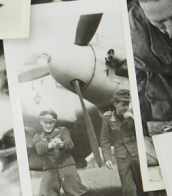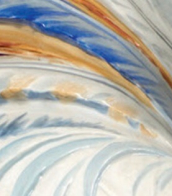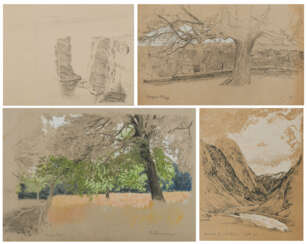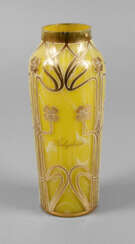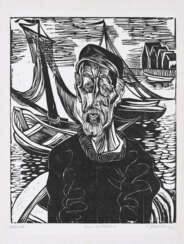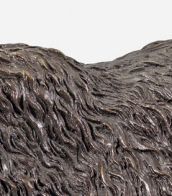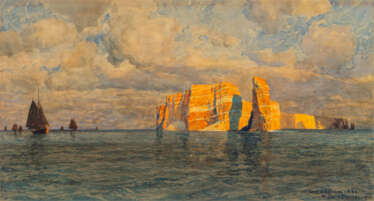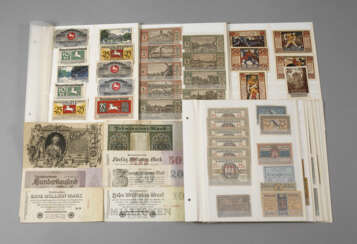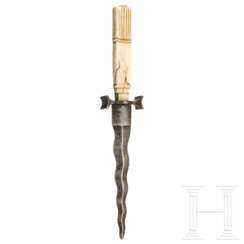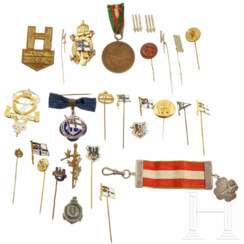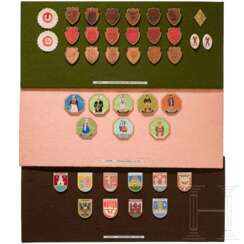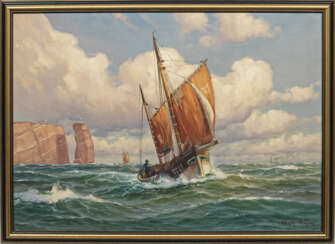helgoland


Friedrich Kallmorgen was a German Impressionist painter who specialized in landscapes and cityscapes.



Conrad Felixmüller was a twentieth-century German artist, born Conrad Felix Müller. He is known as a painter, graphic artist, illustrator and printmaker, a representative of the New Materiality movement, who worked in the Expressionist style.
Felixmüller created about 2,500 paintings and graphic drawings, the main motif of which was the human being. The artist considered himself a socially critical expressionist, and his works reflected scenes from everyday life. In the 1930s, many of his works were confiscated by the Nazis as examples of degenerate art and destroyed. As a result of the bombing of Berlin in 1944, Felixmüller lost much of his work.



Roger Chapelet, full name Albert Roger Édouard Chapelet, was a French marine painter.
Chapelet worked in the Navy Ministry, in 1927 he began painting, and in 1936 he was appointed an official marine painter and became a member of the Naval Academy. During and after World War II, Chapelet took part in numerous operations of the French Navy. During his service, he continued to paint various military operations and naval battles. After the war, he returned to civilian life and became an artist for several ship companies.
Chapelet is considered one of the greatest artists of the French Navy of the 20th century.


Lisel Oppel, actually Anna Amalie Elisabeth Oppel, was a German painter and ceramist who remains to this day one of the most memorable members of the Worpswede artist colony. From 1917 she studied painting at the Academy of Fine Arts in Munich with Richard Riemerschmid and Hermann Gröber.
Liesel Oppel painted simple paintings with great joy and colourfulness; mainly portraits, people at work and on holidays, less often pure landscapes. One of Oppel's special pictorial themes was children's pastimes in the countryside, in which she adopted and extended the motifs of the early Worpswede artists. Most of her work was created in the 1950s. She continued her expressive painting style.


Lisel Oppel, actually Anna Amalie Elisabeth Oppel, was a German painter and ceramist who remains to this day one of the most memorable members of the Worpswede artist colony. From 1917 she studied painting at the Academy of Fine Arts in Munich with Richard Riemerschmid and Hermann Gröber.
Liesel Oppel painted simple paintings with great joy and colourfulness; mainly portraits, people at work and on holidays, less often pure landscapes. One of Oppel's special pictorial themes was children's pastimes in the countryside, in which she adopted and extended the motifs of the early Worpswede artists. Most of her work was created in the 1950s. She continued her expressive painting style.


Martin Fräncis Glüsing was a German marine and landscape painter living in Hamburg.


Conrad Felixmüller was a twentieth-century German artist, born Conrad Felix Müller. He is known as a painter, graphic artist, illustrator and printmaker, a representative of the New Materiality movement, who worked in the Expressionist style.
Felixmüller created about 2,500 paintings and graphic drawings, the main motif of which was the human being. The artist considered himself a socially critical expressionist, and his works reflected scenes from everyday life. In the 1930s, many of his works were confiscated by the Nazis as examples of degenerate art and destroyed. As a result of the bombing of Berlin in 1944, Felixmüller lost much of his work.


Roger Chapelet, full name Albert Roger Édouard Chapelet, was a French marine painter.
Chapelet worked in the Navy Ministry, in 1927 he began painting, and in 1936 he was appointed an official marine painter and became a member of the Naval Academy. During and after World War II, Chapelet took part in numerous operations of the French Navy. During his service, he continued to paint various military operations and naval battles. After the war, he returned to civilian life and became an artist for several ship companies.
Chapelet is considered one of the greatest artists of the French Navy of the 20th century.
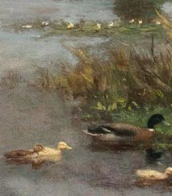



Lisel Oppel, actually Anna Amalie Elisabeth Oppel, was a German painter and ceramist who remains to this day one of the most memorable members of the Worpswede artist colony. From 1917 she studied painting at the Academy of Fine Arts in Munich with Richard Riemerschmid and Hermann Gröber.
Liesel Oppel painted simple paintings with great joy and colourfulness; mainly portraits, people at work and on holidays, less often pure landscapes. One of Oppel's special pictorial themes was children's pastimes in the countryside, in which she adopted and extended the motifs of the early Worpswede artists. Most of her work was created in the 1950s. She continued her expressive painting style.


Michael Zeno Diemer was a German painter. Now known primarily for his marine paintings and postcard designs, he was initially famous for his panoramic paintings of battles.






Leonhard Sandrock was a German painter and etcher.


Martin Fräncis Glüsing was a German marine and landscape painter living in Hamburg.


Martin Fräncis Glüsing was a German marine and landscape painter living in Hamburg.



